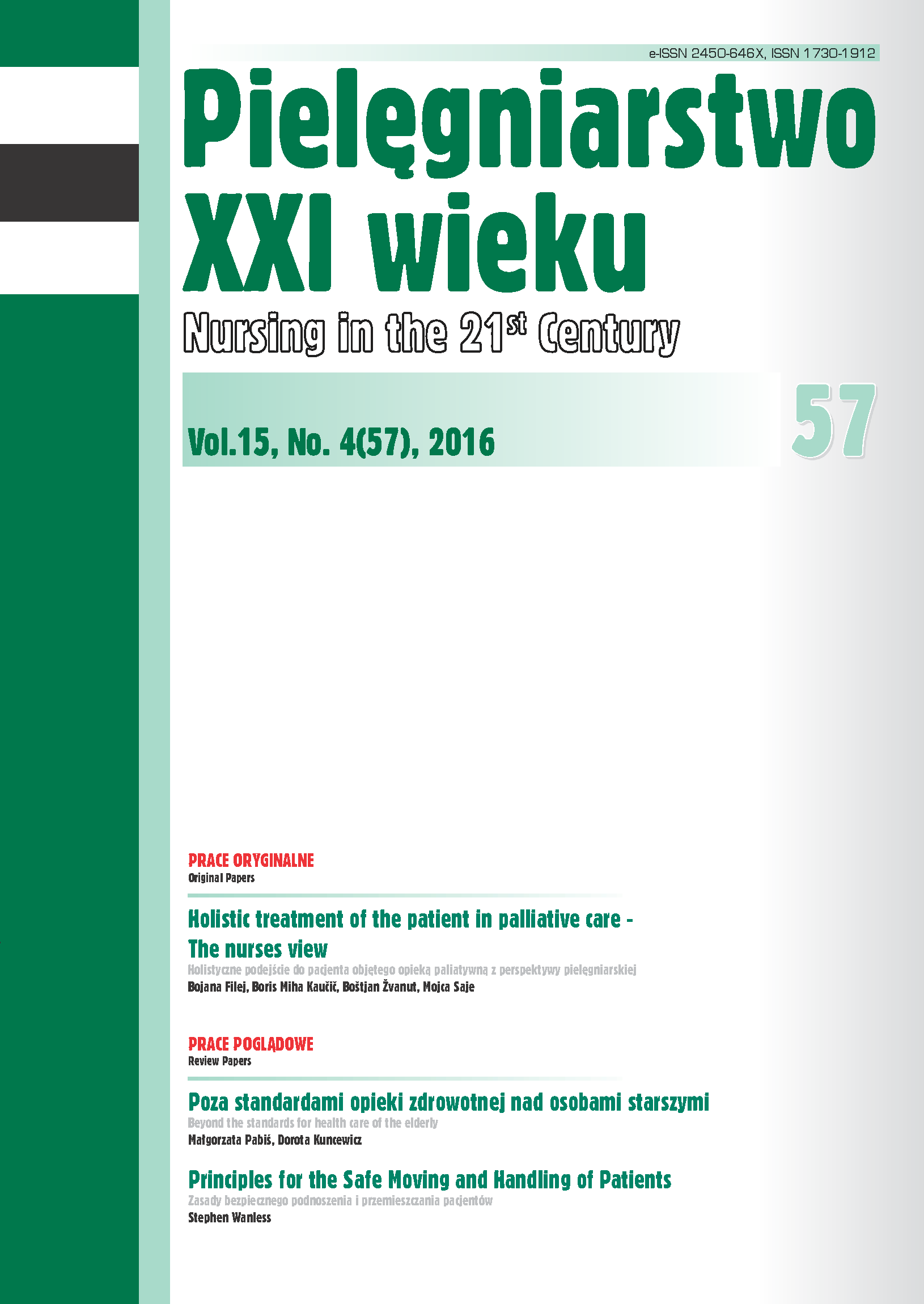Principles for the Safe Moving and Handling of Patients
DOI:
https://doi.org/10.1515/pielxxiw-2016-0040Keywords:
posture, musculoskeletal injury, body mechanics, moving and handlingAbstract
PRINCIPLES FOR THE SAFE MOVING AND HANDLING OF PATIENTS
Human movement when walking or running is a widely researched area. However, there is an increased incidence of musculoskeletal injury from poor positioning when moving and handling patients amongst healthcare professionals and is one of the main causes of long term musculoskeletal health problems. In the clinical area, an individual’s musculoskeletal health system is subjected to mechanical loading, increasing the body’s stress and strain limits, and once these are exceeded injury occurs. The risk of pain and injury has a direct relation from the over use of poor posture from poor moving and handling, which in turn can cause loss of strength and reduce musculoskeletal function. This can be changed through healthcare workers adopting safe biomechanical body movements during patient handling tasks.
References
1. Dorn TW, Wang JM, Hicks JL, Delp SL. Predictive Simulation Generates Human Adaptations during Loaded and Inclined Walking. Public Library of Science One. 2015; 10: 4.
2. Asgari M, Sanjari MA, Mokhtarini HR, et al. The effects of movement speed on kinematic variability and dynamic stability of the trunk in healthy individuals and low back pain patients. Clinical Biomechanics. 2015; 30 (7): 682-688.
3. Wanless S. Improving the effectiveness of motor skills learning in moving and handling training for the healthcare environment. Unpublished PhD thesis, 2015.
4. Health and Safety Executive. Work Related Musculoskeletal Disorder statistics, Great Britain 2015. HMSO. London, 2015.
5. Wanless S. Hopper D. Moving and Handling Practice: The Challenge for Educators. Equipment Services Journal. 2015; 7: 44-48.
6. June KJ. Cho S. Low back pain and work-related factors among nurses in intensive care units. Journal of Clinical Nursing. 2011; 20:3-4: 479-487.
7. Castro AB. Handle with Care: The American Nurses Association’s Campaign to Address Work-Related Musculoskeletal Disorders. Orthopaedic Nursing. 2006; 25 (6): 356-365.
8. de Souza Petersen R, Marziale MHP. Low back pain characterized by muscle resistance and occupational factors associated with nursing. Revista Latino- Americana de Enfermagem. 2014; 22 (3): 386-393.
9. Lind A, Gard G. Harmful Effects in Personal Assistants’ Client Transfer Situations. The Ergonomics Open Journal. 2014; 7: 1-5.
10. Bonzini M, Bertu’ L, Veronesi G, et al. Is musculoskeletal pain a consequence or a cause of occupational stress? A longitudinal study. International Archives of Occupational and Environmental Health. 2015; 88(5): 607-612.
11. Hignett S. Intervention strategies to reduce musculoskeletal injuries associated with handling patients: a systematic review. Occupational and Environmental Medicine. 2003; 60: E6.
12. Bevan S. Economic impact of musculoskeletal disorders (MSDs) on work in Europe. Best Practice & Research Clinical Rheumatology. 2015; 29(3): 356–373.
13. Parent-Thirion A, Vermeylen G, van Houten G, et al. Eurofound project: Fifth European Working Conditions Survey. The European Foundation for the Improvement of Living and Working Conditions. Luxembourg, 2012.
14. Smedley J, Williams S, D’Arcy P, et al. Back pain management: Occupational health practice in the NHS in England. A national clinical audit – round 2. London: Royal College of Physicians, 2012.
15. Unison. UNISON submission to the NHS Working Longer Review. London: Unison, 2013.
16. Wanless S. and Wanless SG. Hoisting a patient: Principles for safer practice. International Journal of Therapy and Rehabilitation. 2015; 22(8): 390- 395.
17. Health and Safety Commission. Manual Handling Operations Regulations 1992, L23 (as amended 2004). HMSO. London, 2016.
Published
Issue
Section
License
Copyright (c) 2016 Author

This work is licensed under a Creative Commons Attribution-NonCommercial-NoDerivatives 3.0 Unported License.




